Archery, like any other sport, can involve a large range of equipment and accessories. However, to get started all you really need are the basics: a bow, a string, some arrows, a bracer, finger tab, a quiver, a bow stand, a bow stringer and a target to shoot at.
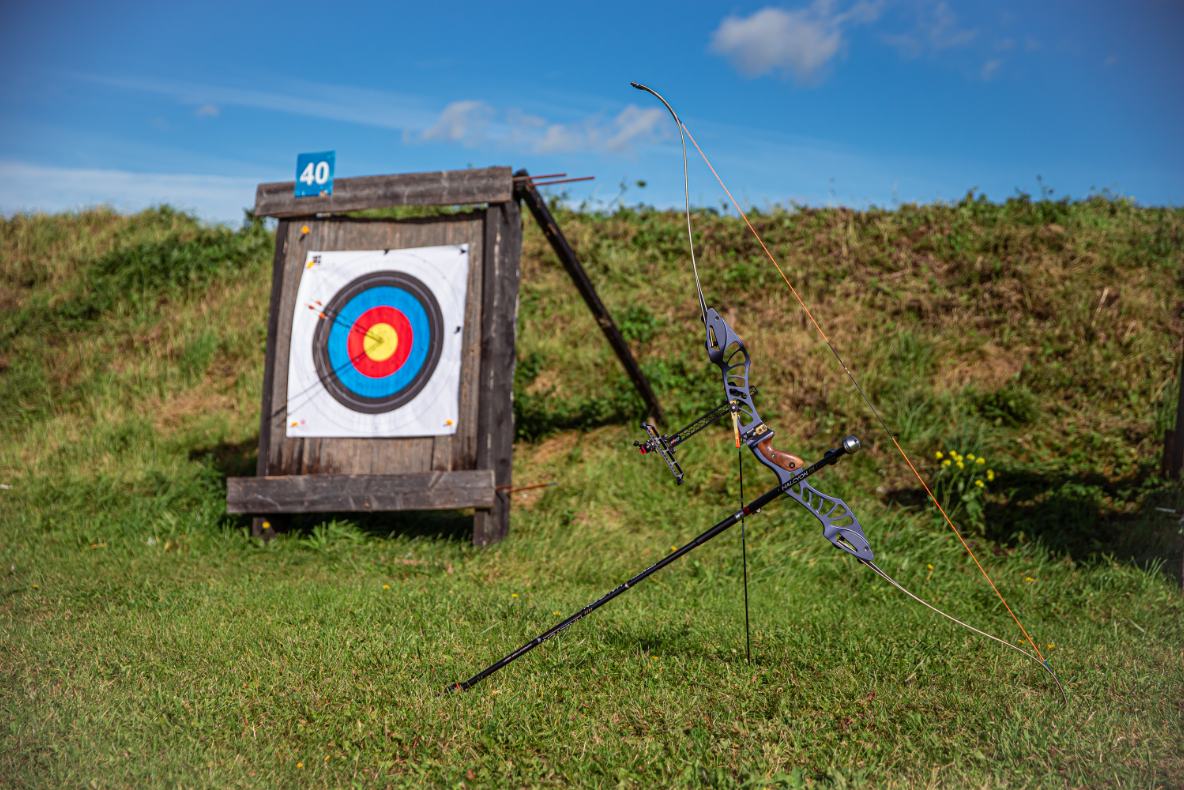
Recurve archery is the most common of all bow styles. This is likely to be the bow you will start archery on. Recurve bows are used in the Olympic Games. A recurve bow has a limb at the top and the bottom that curve, giving the name.
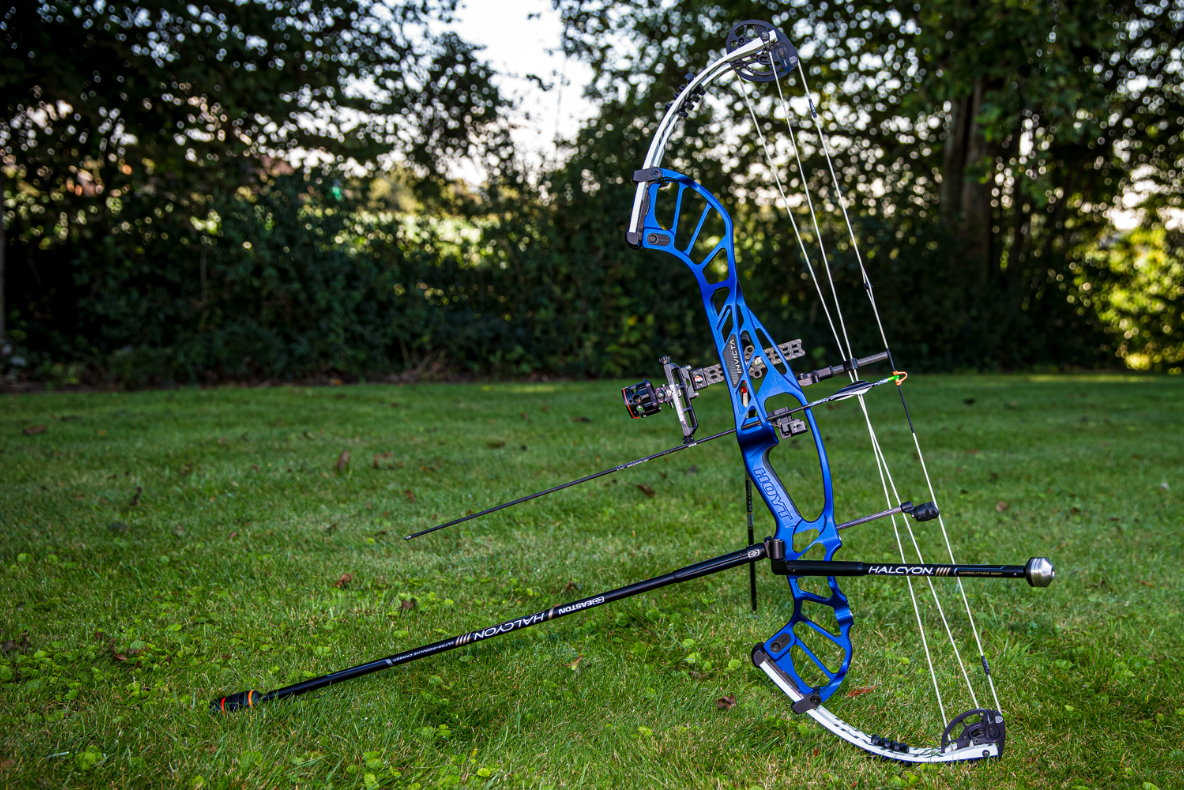
A compound bow works on a system of cams and strings. Unlike a recurve, it does not dismantle. Compound bows have a better accuracy than any other bow style, due to being faster. Because the cams work with the strings and cables to take the weight on the draw, less physical strength is required to shoot the bow. They are smaller and easier to carry and can be held at full draw more easily for longer.
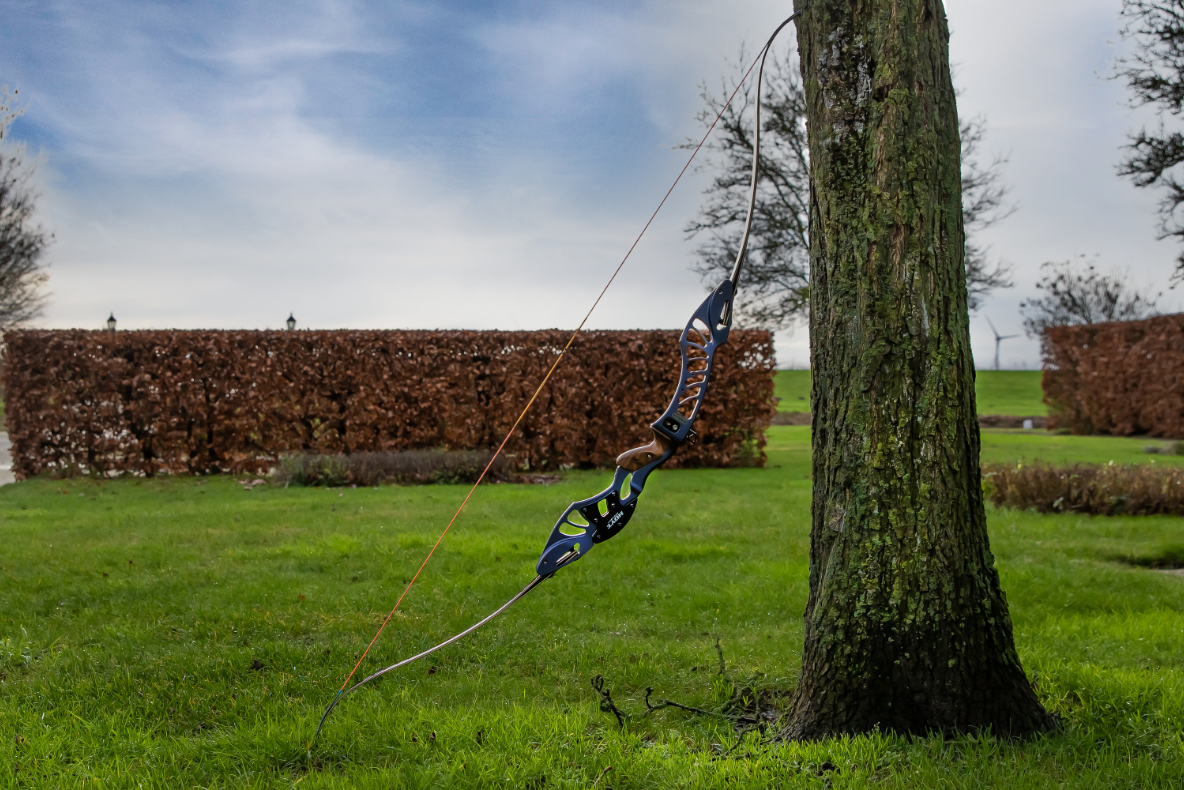
Barebow is like recurve, without accessories such as a sight or stabilisation. The riser is similar to a recurve bow, and can be a recurve riser, the limbs are the same. Fixed weights can be added to the bottom of the riser. It is considered a ‘purer’ and more challenging version of archery as the bow is not fitted with sighting accessories and weights.
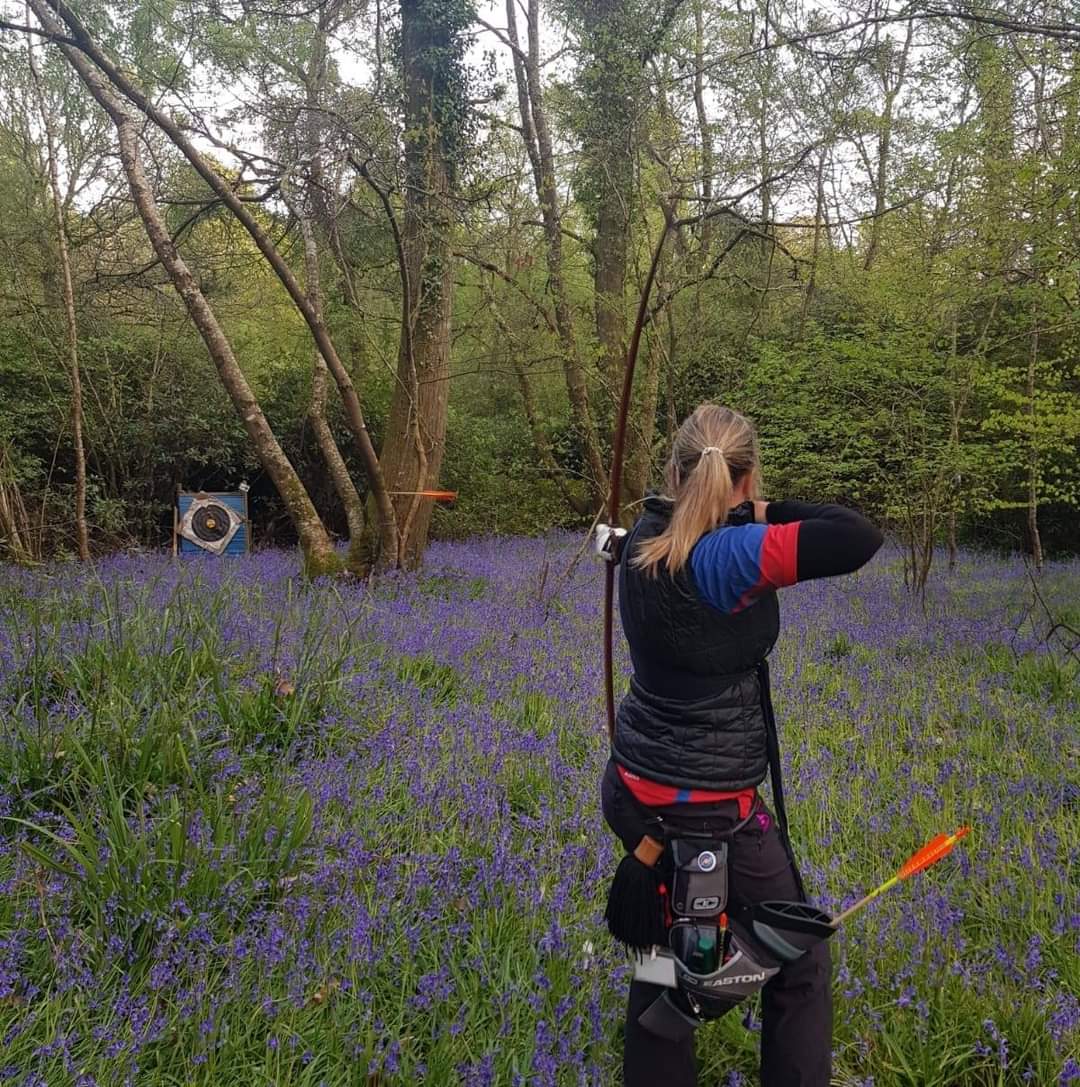
Longbows, by their name, are longer than most bows. There are no stabilisers or accessories except a rubber band that is used for sighting. It is the most traditional version of the sport with a long history going back to when archery was used in warfare. It’s the version of archery you’ll see at historical re-enactments and at Medieval fairs.
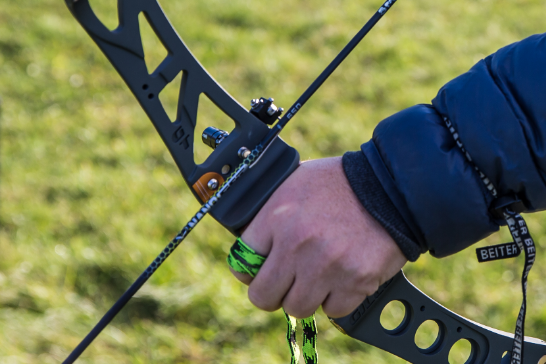
The riser is the centre part of the bow, where you hold. This is the same on compound, recurve and barebow. They can be left-handed or right-handed to suit the individual.
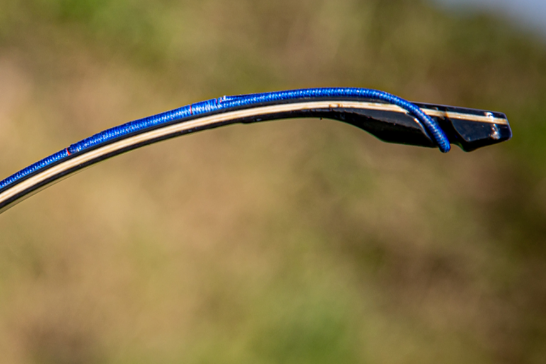
The limbs on a recurve and barebow stick out of the top and bottom of the riser. On a compound there may be two limbs at the top and bottom that are in sync with each other.

The string attaches to the limbs on a recurve and barebow. It is pulled back and once let go, the arrow is shot. Compound bows can have multiple strings and cables that are pulled back with a mechanical aid.
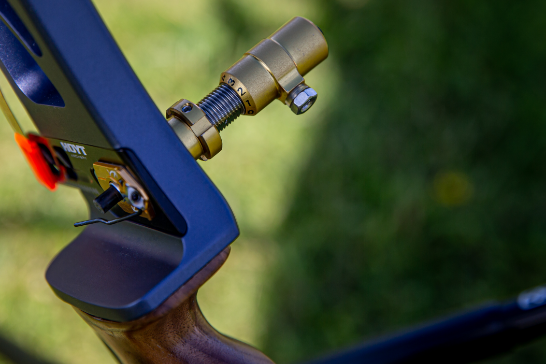
Barebow and recurve archers use a pressure button on their bows to help with tuning the arrows. This helps with accuracy. Arrows bend as they are shot, a pressure button helps the arrows leave the bow cleanly when they are shot.
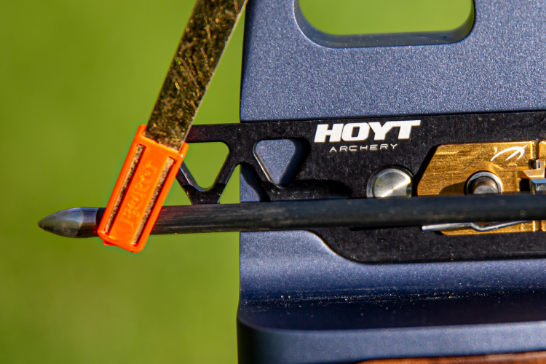
A clicker is used on a recurve bow to ensure the string is pulled back to the same place each time, before releasing the arrow. The arrow is placed underneath the clicker, once drawn back, the clicker will make a sound, alerting the archer to shoot.
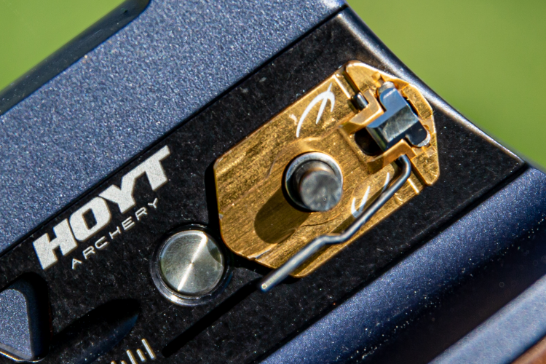
An arrow rest is a simple device that fits to the riser of the bow to support an arrow while it is being shot. It is designed to hold the arrow in the correct position, and is flexible enough not to interfere with the arrow as it begins its flight. Arrow rests are available for left and right-handed bows.
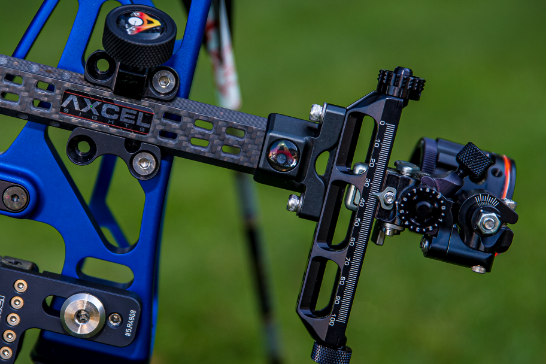
A recurve bow will have a sight that is adjusted to help arrows hit the target. Compound bows also have a scope, this is to help with accuracy and to magnify the target.
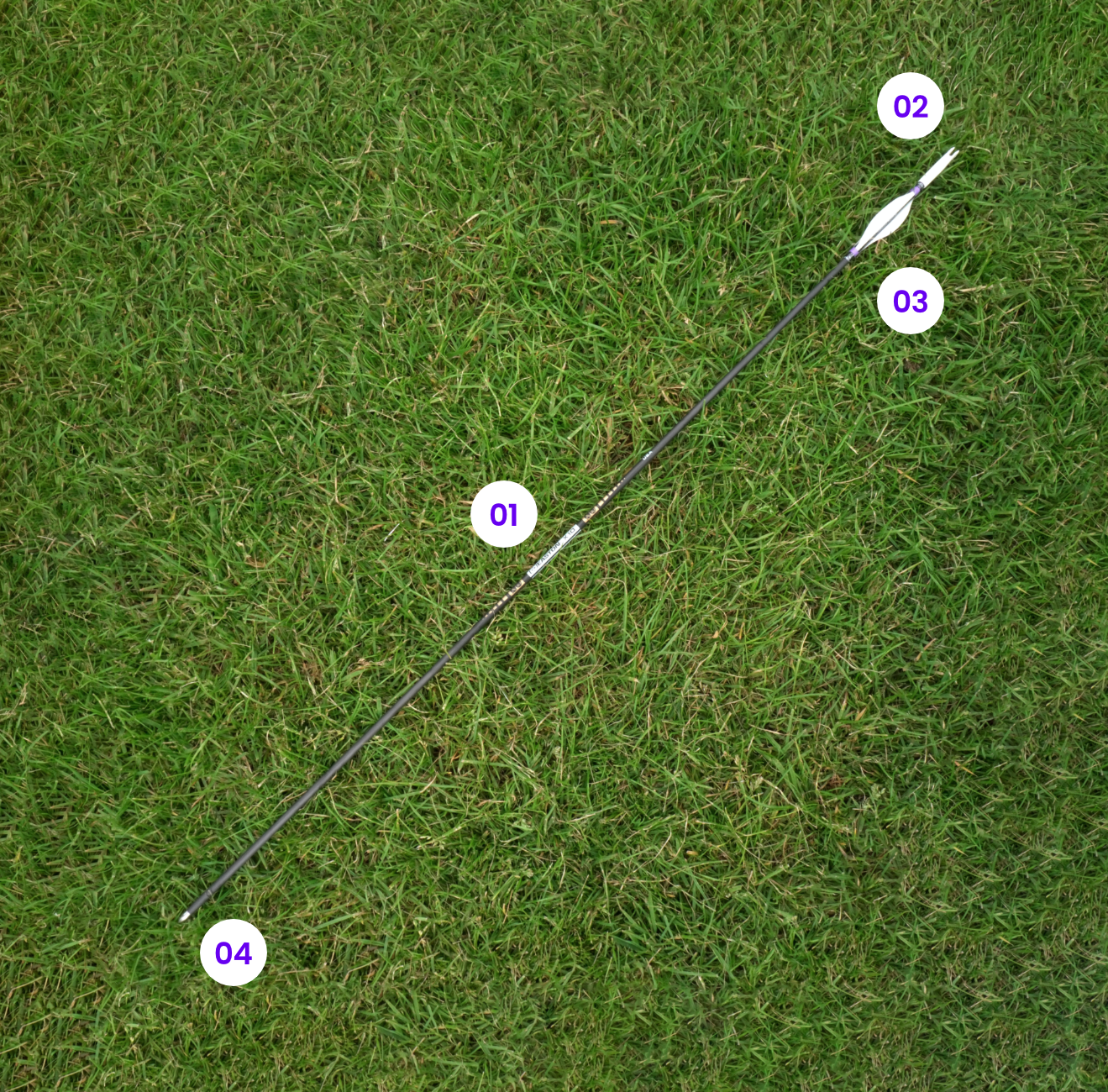
Arrows can be wooden, aluminium, carbon, or a carbon/aluminium combination. Choosing the right arrow stiffness and length for you is vital. You must never use an arrow that is too short because, when you draw it, there is a risk it can fall off the arrow rest and damage the bow or, worse, damage you.
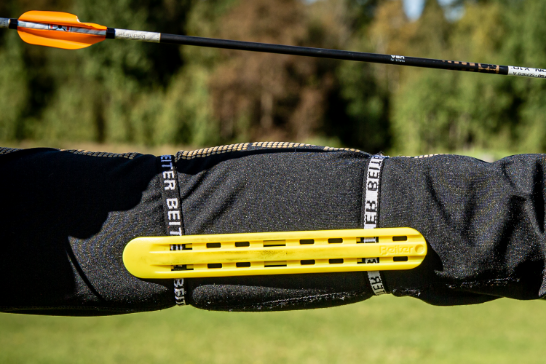
A bracer is used to keep loose clothing from getting in the way of the string, and to stop the string hitting the arm, which could cause bruising. It is fitted to the inside of the arm holding the bow, between the elbow joint and the wrist. The widest end of the bracer fits closest to the elbow.
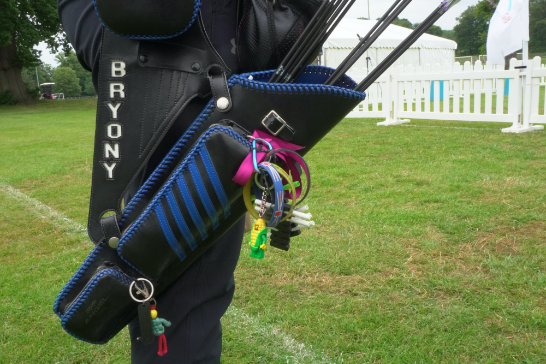
A quiver is simply a device designed to hold an archer’s arrows. A side quiver is attached to a belt and worn around the waist, while a ground quiver is placed on or into the ground to hold arrows next to the archer. Some ground quivers can also hold bows when they’re not in use.
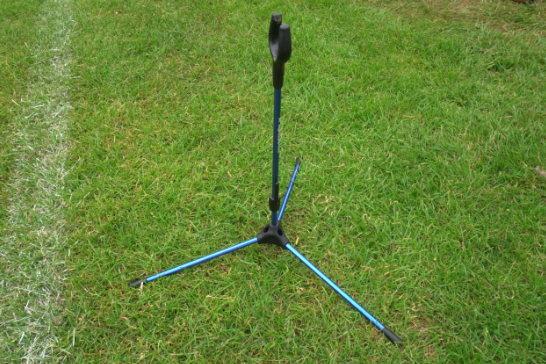
A simple support used to hold a bow off the ground when it’s not being shot.
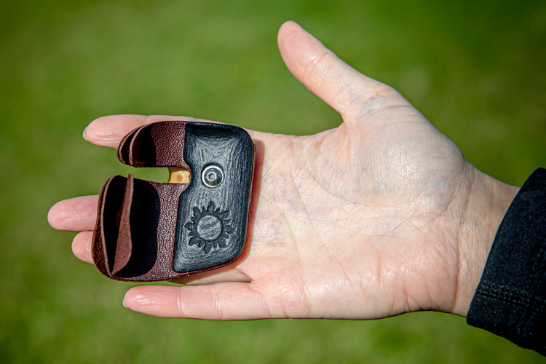
A tab provides protection for the fingers which draw the string. For a close and comfortable fit, they are secured over the archer’s fingers, and some models can be adjusted to the size of your hand. Barebow archers have a different type of finger tab to recurve archers.
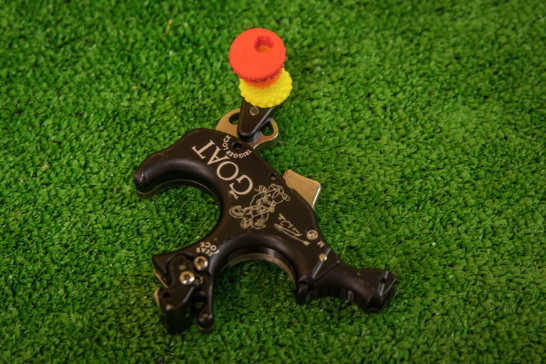
A release aid is for compound archers. It is a mechanical device that aids with pulling back the string, as the poundage of the bow is too much for fingers to pull back.
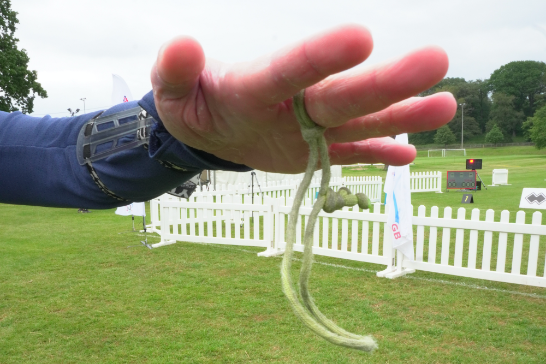
This is a piece of string that goes around a finger and thumb that hold the bow to ensure it isn’t dropped whilst shooting.
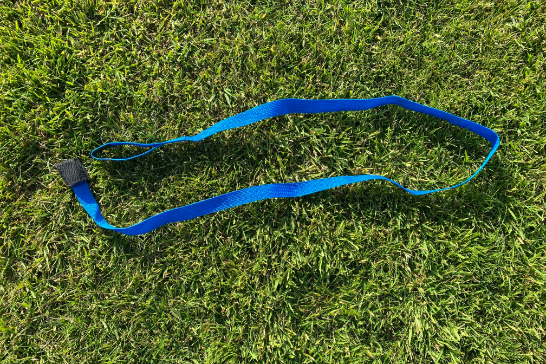
A bow stringer is used to string and unstring a bow. For your own safety it is always best to learn to do this under the guidance of an experienced archer or coach.

A target is comprised of three parts: a target face, usually made of reinforced paper; a boss, made from tightly packed rubber or straw which stops the arrows safely; and a stand, which holds the boss and target face in place.